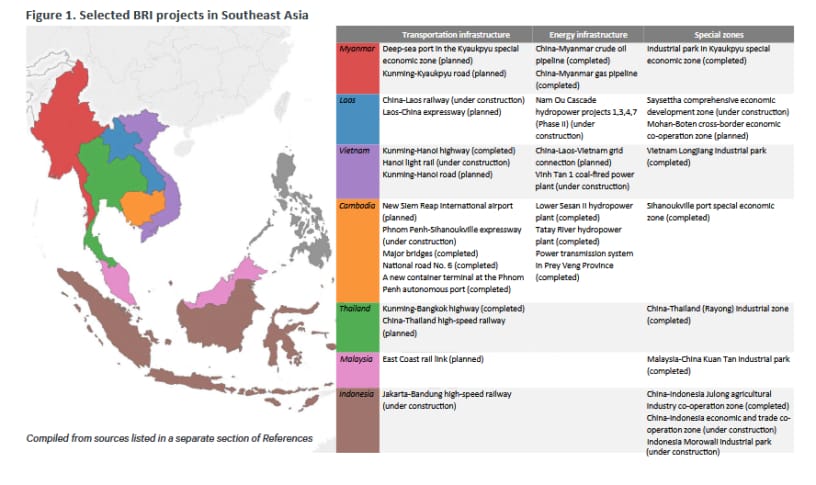As Southeast Asia navigates rapid urbanization and economic growth, its cities face rising climate challenges. The adoption of Green Infrastructure Southeast Asia — from sustainable transportation systems to eco-friendly public utilities — is becoming essential. Countries across the region are increasingly investing in innovative projects to ensure that urban growth aligns with environmental goals and resilience against climate risks.

Innovative Financing Models for Green Infrastructure Southeast Asia
A significant aspect of the transformation of Green Infrastructure Southeast Asia lies in its approach to financing. Recognizing the need for massive infrastructure investments to meet environmental targets, the Asian Development Bank (ADB) has partnered with Singapore’s Infrastructure Asia to foster innovative funding solutions. Traditional financing alone cannot meet the estimated $210 billion annual investment required by Southeast Asian nations until 2030. To bridge this funding gap, ADB and Infrastructure Asia are promoting innovative financing models that blend public funds with private capital, helping make eco-friendly projects more financially viable.
Two impactful financing methods gaining traction in Southeast Asia are blended finance and transition credit. Blended finance combines public and private funds to lower the risks for investors, while transition credit provides loans with favorable terms, encouraging large-scale projects. Additionally, green, social, and climate bonds have emerged as viable options, attracting substantial private investment alongside public funds.
ASEAN Catalytic Green Finance Facility (ACGF): A Regional Initiative
The ASEAN Catalytic Green Finance Facility (ACGF) is at the forefront of Southeast Asia’s green financing landscape. Supported by the ASEAN Infrastructure Fund, ADB, and major development financiers, the ACGF mobilizes funds for critical projects of Green Infrastructure Southeast Asia. It has already supported over 39 projects that are expected to reduce carbon emissions by more than 400,000 tons annually. This fund has helped secure $72 million in capital expenditures and $150 million per year in operational expenses from private and institutional investors.
Through the ACGF, Southeast Asia is funding eco-friendly urban solutions, including renewable energy, sustainable transport, and clean water systems. By offering favorable lending rates during the initial stages, ACGF reduces high upfront costs, making green infrastructure projects more attractive to investors.
Pioneering Projects and Regional Cooperation
Southeast Asia’s green infrastructure push has resulted in several notable projects. For example, the ASEAN Infrastructure Fund, in collaboration with the Green Climate Fund, is co-financing the modernization of public transport in the Philippines’ Davao City. Similarly, Cambodia’s Energy Transition Program, funded partly by ACGF, aims to modernize energy systems while lowering emissions. These projects highlight the region’s commitment to transitioning to cleaner energy while accommodating its growing urban populations.
In parallel, the ASEAN+3 Asian Bond Markets Initiative (ABMI) is helping to standardize green bond issuance across Southeast Asia. Countries like Indonesia, Thailand, and the Philippines have successfully launched green and social bonds, raising billions of dollars for sustainable projects in energy, sanitation, and transport.
Private Sector Partnerships: A Key to Successful Green Infrastructure Southeast Asia
A key driver of Southeast Asia’s green infrastructure growth is its partnerships with the private sector and international investors. The ASEAN-Indo Pacific Forum (AIPF), initiated by Indonesia, recently attracted $38.2 billion in project proposals from global partners. The forum included 93 Green Infrastructure Southeast Asia projects, with Indonesia leading with over $32 billion in investments. These partnerships demonstrate Southeast Asia’s appeal as an investment hub for eco-friendly projects, creating a collaborative network to further green infrastructure goals.
Challenges and Future Prospects
Despite significant progress, Southeast Asia faces hurdles in fully realizing its green infrastructure potential. Financing remains a primary challenge, with annual infrastructure costs totaling between $184 billion and $210 billion. However, initiatives like the ACGF, AIPF, and the ABMI provide promising frameworks for attracting investment. These initiatives have mobilized billions in green financing, offering a roadmap for sustainable growth.
The shift towards Green Infrastructure Southeast Asia marks a critical step in balancing urban development with environmental sustainability. As partnerships grow and innovative financing models mature, the region is set to become a global example of eco-friendly urbanization. Southeast Asia’s proactive approach offers hope that rapid development can indeed coexist with environmental stewardship, benefiting not only the region but setting a standard for sustainable infrastructure worldwide.

